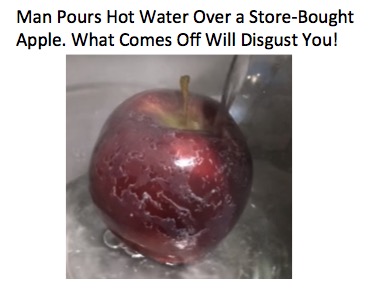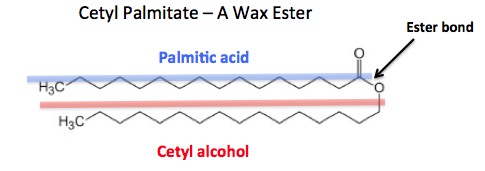
Here's a rumor that is so stupid that I'm reluctant to take time off from Sudoku to even bother to write about it. But, it's making the rounds big time on the Internet, so in order to avoid having one more harmless thing to worry about, I better do it anyhow. Hang on.

OK, all done. So, let's have a really simple chemistry lesson: Stuff melts.
Wax is stuff, so it also melts. All you have to do is heat it to about 100ºF and there ya go.
Chemistry lesson #2: If something melts at 100ºF, it will also melt at 212ºF.

So, all the people who have gotten hysterical about the video that shows the "toxic, disgusting" process that occurs when boiling water is poured onto an apple should, um, chill. The wax is melting. Just like it should.
But, there is always some idiot around, who either believes stuff like this or (more likely) uses it to make money from the idiots who follow him. For example...

Here's what disgusts me: the website that featured the "disgusting" lie. It happens to belong to the "Dean of Derangement," David Avocado Wolfe.

David Avocado Wolfe. Would need to be wearing moose antlers to look any dumber.
So, here is what Wolfe and the other "Nature Nazis" want you to be terrified of: wax. Good luck finding anything safer. It is edible.
Chemistry Lesson #3: What is wax?
There are a number of different types of waxes. They all have a few things in common. They all start to melt in a hot room, and they contain long chains of carbon atoms. When the entire chain consists of only carbon, this is called a paraffin wax. When the long chain consists of two components— a fatty alcohol and a fatty acid, this is called a wax ester, which is usually the type of wax used in food. Cetyl palmitate is a common wax ester.

Pop quiz: Is wax bad for you?
Hint: no.
Little known fact: Apples make their own wax. (1) Take that Avocado Head. Sometimes wax is added to the existing wax to make it, uh, waxier (2). But it doesn't matter:
"When reliable analytical methods were used to distinguish between the wax naturally present in the apple and that applied during waxing it was difficult even to detect the presence of the added wax on the waxed apples."
Source: WSU Tree Fruit Research & Extension Center Postharvest Information Network
I'd like to wax poetic about this, but I have another Sudoku puzzle that needs to be solved.
Notes:
(1) Even though apples make their own wax, it can be washed off when the fruit is cleaned. Adding back a wax coating keeps the apple moist and also prevents spoilage by mold.
(2) Yes - that was terrible. No need to point it out.



